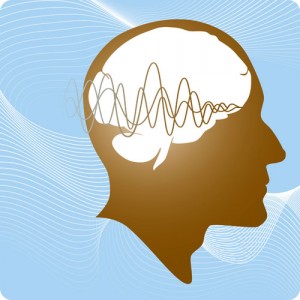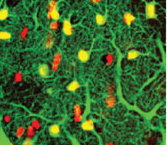New Brain Stimulation Method Uses Ultrasound
 Alexander Bystritsky of UCLA and colleagues at McLean Hospital and Harvard Medical School reported at the 51st Annual Meeting of the National Institute of Mental Health’s New Clinical Drug Evaluation Unit (NCDEU) in 2011 that low intensity focused ultrasound pulsation could eventually be used as a noninvasive intervention for diagnosing and treating brain disease.
Alexander Bystritsky of UCLA and colleagues at McLean Hospital and Harvard Medical School reported at the 51st Annual Meeting of the National Institute of Mental Health’s New Clinical Drug Evaluation Unit (NCDEU) in 2011 that low intensity focused ultrasound pulsation could eventually be used as a noninvasive intervention for diagnosing and treating brain disease.
In animal studies, the researchers used low intensity 100 Hz stimulation, which could produce a focused activation or inhibition of specific brain areas. Researchers were able to produce acute and long-term anticonvulsant effects in the animals, and when targeting the hypothalamus they could increase the animals’ heart rate and blood pressure.
Editors note: These preliminary preclinical data raise the possibility that in the future this new mode of non-invasive and relatively precise brain stimulation may be used to treat neuropsychiatric disorders. Existing non-invasive brain stimulation methods include repeated transcranial magnetic stimulation (rTMS) and low level magnetic fields. Vagal nerve stimulation (VNS), which requires an implant in the chest, is more invasive. The most invasive and the most precisely targeted method of brain stimulation is deep brain stimulation (DBS). In this type of treatment electrodes are inserted in the brain of the patient.
Stress or Ultrasonic Stimulation In Utero Could Alter Neuronal Migration Patterns
At the 57th Annual Meeting of the American Academy of Child and Adolescent Psychiatry (AACAP) in October 2010, Hanna Stevens of the Yale Child Study Center reported that rat pups in utero who experienced prenatal stress (i.e., when the pregnant rat was restrained during the last week of pregnancy) had fewer neurons containing GABA, which is the main inhibitory neurotransmitter in the brain, than control pups. This deficit may reflect a delay in the neurons’ ventral to rostral migration or in their maturation. These deficits in GABAergic neurons following prenatal stress are noteworthy in light of the deficits in GABAergic neurons found in adults with bipolar illness. This research is unusual in that it suggests that prenatal stress can affect neuronal numbers.
Editor’s Note: Stevens was aware of data from the renowned neuroanatomist Pasco Rakic, also at Yale. Some years ago Rakic reported that ultrasonic stimulation of the brain had major disorganizing effects on neuronal migration in the primate brain. Since prenatal stress and ultrasonic stimulation can affect neuronal migration, and dysregulation of neuronal migration has been implicated in autism, these data raise the hypothesis (so far untested) that one possible reason for the recent increases in the incidence of autism is the increased use of sonograms to monitor various aspects of prenatal growth and development during pregnancy. These preclinical findings deserve to be further studied for their potential relevance to humans.


